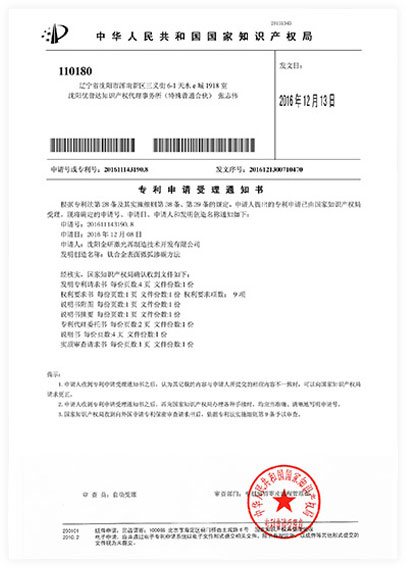jyjg2018@163.com
024-25799906

We have four main welding systems: micro-arc welding, laser welding, special welding and high temperature welding. The repair process does not cause secondary damage to the workpiece, such as deformation and damage (including base annealing, tempering or re-quenching, thermal cracking, etc.), and the repair area is metallurgically bonded to the workpiece base, the strength of the repair area can reach more than 85% of the original body material, while the wear resistance, corrosion resistance and scouring resistance can be significantly higher than the original workpiece body material.

The first domestic W-PM method (powder metallurgy method), L-PM (laser powder metallurgy method), thermal barrier coating technology

High-temperature parts repair costs are generally about 10% to 30% of the cost of new parts, repair will greatly reduce the cost of equipment overhaul and maintenance. Gas turbine overhaul is divided into combustion chamber inspection (commonly known as minor repair) hot passage inspection (commonly known as medium repair) and main engine inspection (commonly known as major repair). The life of the combustion engine mainly depends on the components related to the combustion process (called hot passage components), which mainly include flame barrel, end cap, guide bushing, fuel nozzle, joint flame tube, transition break, turbine nozzle, turbine compound ring, turbine dynamic blade, etc. The following table shows the maintenance guidelines for GE gas turbines in the USA.

In the reaction process, under the condition of 600℃, H2SO4 reacts with CaF to produce H2F and at the same time, H2SO4 and the inner wall of the kettle also cause serious corrosion, with an average corrosion rate of 30mm/year, resulting in the scrapping of the kettle. The kettle was scrapped. After understanding the production process on site, we developed the IMR-200 series corrosion resistant powder and coating application process based on a large number of experimental results, and applied it to the protection of this type of reactor. After nearly two years of operation, there is no obvious corrosion on the surface of the protective layer, which has been well received by users and is being actively adopted.

The invention relates to the field of surface strengthening of titanium alloys, specifically to micro-arc carburising of titanium alloy surfaces. A graphite rod is used as the anode to rotate or vibrate at a certain speed and the carburised workpiece as the cathode. A high frequency pulsed strong current is applied between the two poles and a micro-arc spark discharge is formed under argon protection. Carburising occurs in the discharge area in contact with the graphite rod, while no carburising occurs in the non-contact area and the workpiece does not need to be heated as a whole. With the present invention, micro-arc carburising can be carried out on the surface of titanium alloys, solving the problems of low hardness, easy contact corrosion, poor wear resistance and low resistance to abrasion and fatigue. The use of micro-arc carburising can effectively strengthen the surface of titanium alloys.

 Address:A No.13 Twenty-third Road, South Economic and Technological Development Zone, Shenyang City, Liaoning Province.
Address:A No.13 Twenty-third Road, South Economic and Technological Development Zone, Shenyang City, Liaoning Province. Phone:13898848281
Phone:13898848281 Landline:024-25799905
Landline:024-25799905 Fax:024-25799905
Fax:024-25799905 E-mail:jyjg2018@163.com
E-mail:jyjg2018@163.com